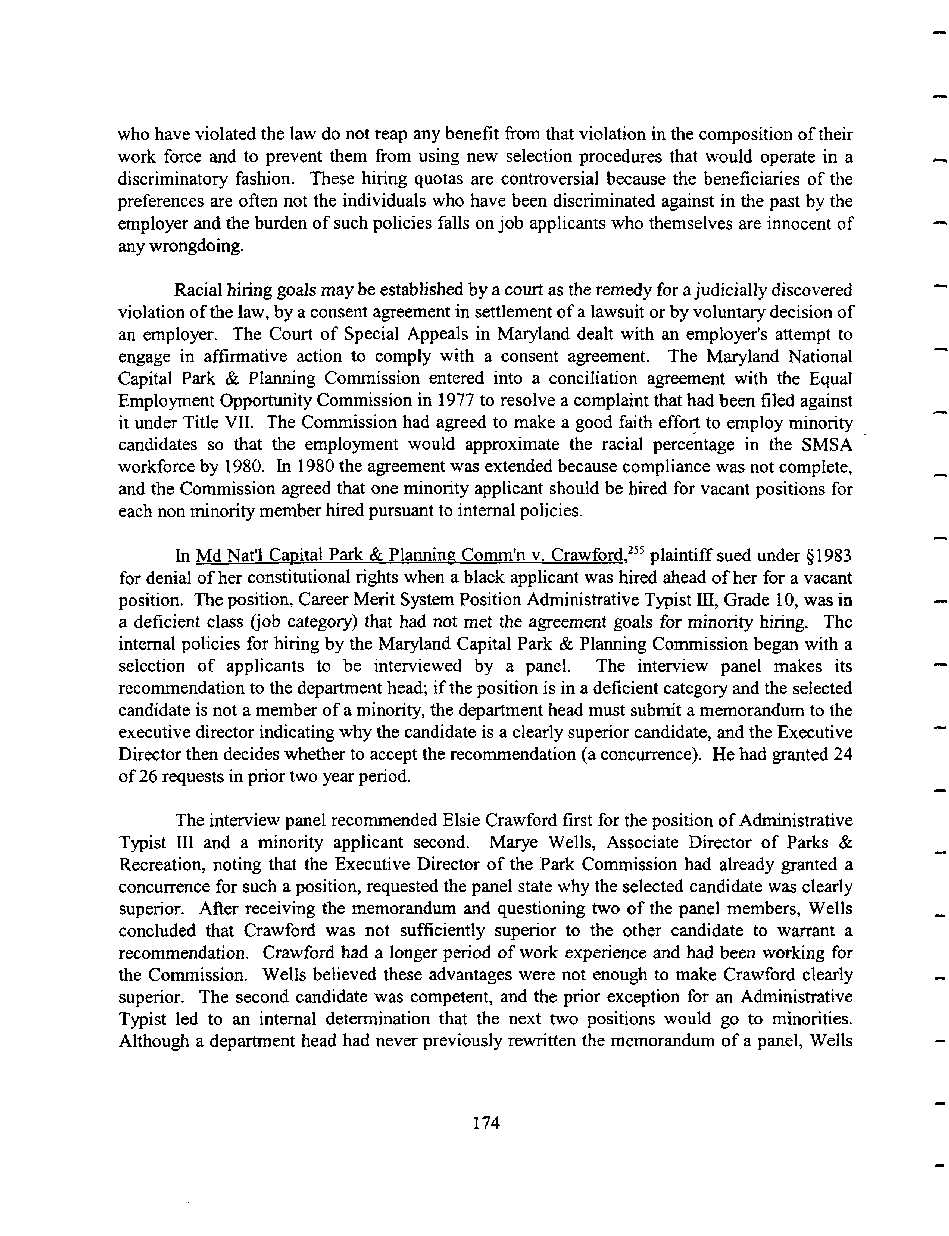|
who have violated the law do not reap any benefit from that violation in the composition of their
work force and to prevent them from using new selection procedures that would operate in a
discriminatory fashion. These hiring quotas are controversial because the beneficiaries of the
preferences are often not the individuals who have been discriminated against in the past by the
employer and the burden of such policies falls on job applicants who themselves are innocent of
any wrongdoing.
Racial hiring goals may be established by a court as the remedy for a judicially discovered
violation of the law, by a consent agreement in settlement of a lawsuit or by voluntary decision of
an employer. The Court of Special Appeals in Maryland dealt with an employer's attempt to
engage in affirmative action to comply with a consent agreement. The Maryland National
Capital Park & Planning Commission entered into a conciliation agreement with the Equal
Employment Opportunity Commission in 1977 to resolve a complaint that had been filed against
it under Title VII. The Commission had agreed to make a good faith effort to employ minority
candidates so that the employment would approximate the racial percentage in the SMSA
workforce by 1980. In 1980 the agreement was extended because compliance was not complete,
and the Commission agreed that one minority applicant should be hired for vacant positions for
each non minority member hired pursuant to internal policies.
In Md Nat'1 Capital Park & Planning Comm'n v. Crawford.255 plaintiff sued under §1983
for denial of her constitutional rights when a black applicant was hired ahead of her for a vacant
position. The position, Career Merit System Position Administrative Typist ffi, Grade 10, was in
a deficient class (job category) that had not met the agreement goals for minority hiring. The
internal policies for hiring by the Maryland Capital Park & Planning Commission began with a
selection of applicants to be interviewed by a panel. The interview panel makes its
recommendation to the department head; if the position is in a deficient category and the selected
candidate is not a member of a minority, the department head must submit a memorandum to the
executive director indicating why the candidate is a clearly superior candidate, and the Executive
Director then decides whether to accept the recommendation (a concurrence). He had granted 24
of 26 requests in prior two year period.
The interview panel recommended Elsie Crawford first for the position of Administrative
Typist El and a minority applicant second. Marye Wells, Associate Director of Parks &
Recreation, noting that the Executive Director of the Park Commission had already granted a
concurrence for such a position, requested the panel state why the selected candidate was clearly
superior. After receiving the memorandum and questioning two of the panel members, Wells
concluded that Crawford was not sufficiently superior to the other candidate to warrant a
recommendation. Crawford had a longer period of work experience and had been working for
the Commission. Wells believed these advantages were not enough to make Crawford clearly
superior. The second candidate was competent, and the prior exception for an Administrative
Typist led to an internal determination that the next two positions would go to minorities.
Although a department head had never previously rewritten the memorandum of a panel, Wells
174
�
|

